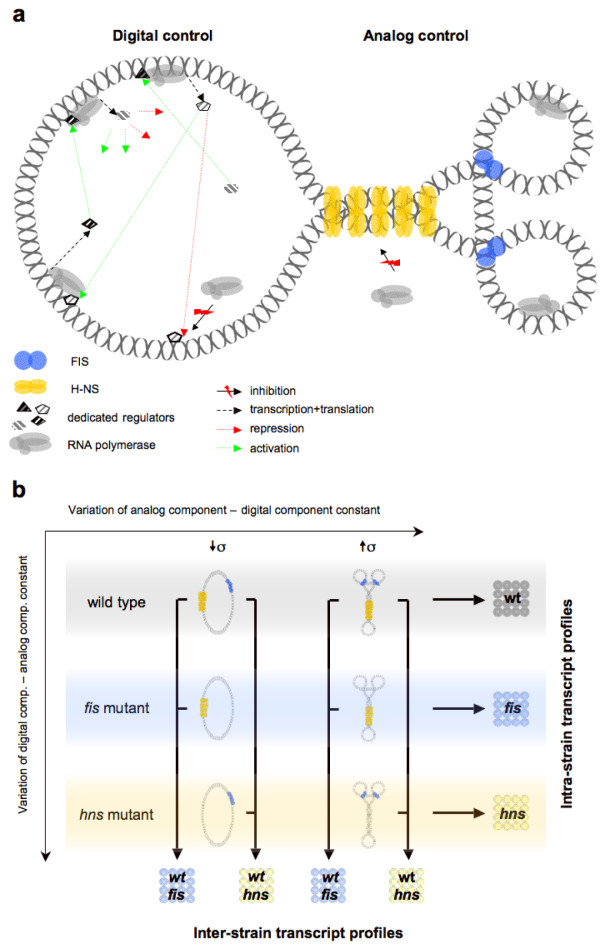Figure 1.
Experimental design. (a) Schematic representation of digital-type vs. analog-type of regulation. Digital control: Dedicated regulators independently recruit polymerase to distantly located genes to either activate (green arrows) or repress (red arrows) their activity. Analog control: Abundant DNA architectural proteins (only FIS and H-NS are shown for simplicity) form topological domains, thus rendering the distant genes under independent digital control similarly accessible to polymerase. The activation of transcription is indicated by RNA polymerase associated with DNA, repression of transcription by "red-flashed" arrows. (b) In our experimental setup the transcript profiles of three E. coli strains (wild-type, fis mutant, hns mutant) are compared under low (↓σ) and high superhelicity (↑σ) and also with each other (vertical connections). The three intra-strain transcript profiles (wt, fis, hns) show differentially expressed genes in response to variation of negative supercoiling but under a constant transcriptional regulatory network. The four inter-strain profiles (wt-fis and wt-hns for ↓σ and ↑σ each) show genes differentially expressed under constant supercoiling but with different genetic backgrounds. Note that alterations in superhelical density caused by mutations themselves are negligible compared to the experimentally induced changes of superhelicity [11].

